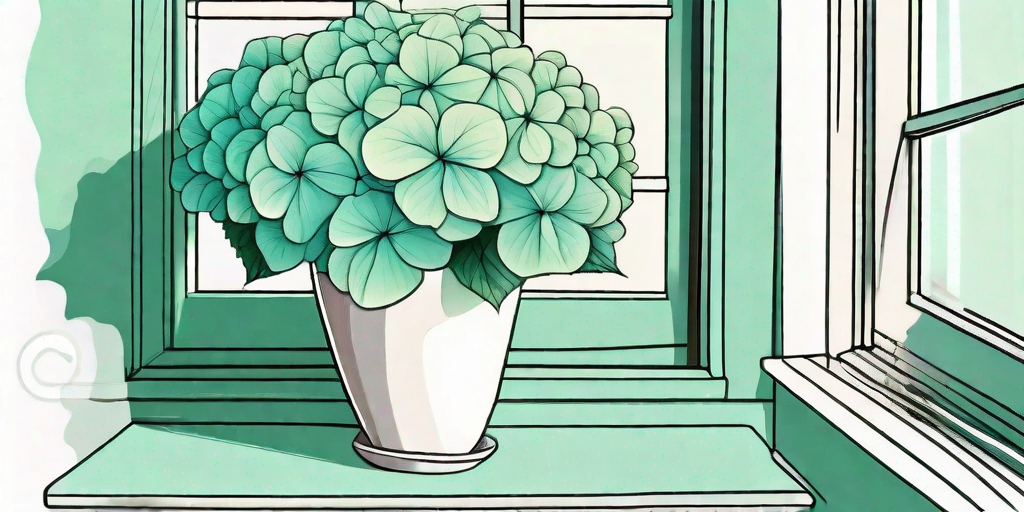
Hydrangeas, with their lush foliage and stunning blooms, are a sight to behold. They are the divas of the garden, demanding attention and admiration. But what if you could bring this spectacle indoors? Yes, you heard it right! Indoor hydrangeas are a thing, and they are just as fabulous as their outdoor counterparts. But, like all divas, they need a little extra care and attention. So, put on your gardening gloves, and let's dive into the world of indoor hydrangeas.
The Basics of Indoor Hydrangea Care
Before we get into the nitty-gritty, let's cover the basics. Hydrangeas are native to Asia and the Americas, and they love a bit of shade and moisture. They are like the Goldilocks of the plant world – not too hot, not too cold, just right. So, if you're thinking of inviting a hydrangea into your home, make sure you can provide these conditions.
Indoor hydrangeas come in various types, each with its own set of requirements. Some are drama queens that need constant care, while others are more laid-back. But don't worry, we'll cover all of that in the following sections.
Choosing the Right Hydrangea
Choosing the right hydrangea for your home is like choosing the right pet. You need to consider your lifestyle, your home's conditions, and your willingness to cater to the plant's needs. Some hydrangeas are more suited to indoor life than others. For example, the Bigleaf hydrangea (Hydrangea macrophylla) is a popular choice for indoor gardening due to its compact size and beautiful, large flowers.
Another good choice is the Oakleaf hydrangea (Hydrangea quercifolia), which is known for its stunning, oak-shaped leaves and large, cone-shaped flower clusters. This hydrangea is a bit more independent and can tolerate a bit more neglect than the Bigleaf variety. So, if you're a forgetful waterer, this might be the one for you.
How to Care for Your Indoor Hydrangea
Now that you've chosen your hydrangea, it's time to learn how to take care of it. And don't worry, it's not as complicated as it sounds. With a bit of patience and a lot of love, your hydrangea will be the star of your indoor garden.
Here are some tips to keep your indoor hydrangea happy and healthy:
- Light: Hydrangeas love bright, indirect light. So, place them near a window, but not in direct sunlight. Think of them as vampires – they like the light, but they don't want to burn.
- Water: Hydrangeas are thirsty plants. They like their soil to be consistently moist, but not waterlogged. So, water them regularly, but make sure the pot has good drainage to prevent waterlogging.
- Humidity: Hydrangeas love humidity. If your home is dry, consider using a humidifier or placing the pot on a tray of pebbles with water to increase the humidity around the plant.
- Temperature: Hydrangeas prefer cooler temperatures, around 60-65°F (15-18°C). So, keep them away from radiators and other heat sources.
- Pruning: Prune your hydrangea in late winter or early spring to encourage new growth. Just make sure not to overdo it – remember, it's a haircut, not a buzz cut.
Common Problems and Solutions
Even with the best care, your hydrangea might encounter a few problems. But don't panic! Most of these issues are easy to solve. Here are some common problems and their solutions:
Wilting Leaves
If your hydrangea's leaves are wilting, it's probably thirsty. Check the soil, and if it's dry, give your plant a good drink. If the soil is wet, you might be overwatering. In this case, let the soil dry out a bit before watering again.
Brown Leaf Edges
Brown leaf edges are usually a sign of low humidity. Try increasing the humidity around your plant by using a humidifier or a pebble tray. If that doesn't work, your plant might be getting too much light. In this case, move it to a shadier spot.
Yellow Leaves
Yellow leaves can be a sign of several issues, including overwatering, underwatering, or a lack of nutrients. Check the soil and adjust your watering schedule accordingly. If that doesn't help, try feeding your plant with a balanced, slow-release fertilizer.
FAQs
Can hydrangeas grow indoors?
Yes, they can! With the right care, hydrangeas can thrive indoors. Just make sure to provide them with the right conditions, and they'll reward you with their stunning blooms.
How often should I water my indoor hydrangea?
Hydrangeas like their soil to be consistently moist, so you should water them regularly. However, the frequency will depend on your home's conditions. As a rule of thumb, check the soil every few days, and if the top inch is dry, it's time to water.
Do indoor hydrangeas need sunlight?
Hydrangeas need bright, indirect light. So, while they don't need direct sunlight, they do need a bright spot. A window with filtered light is ideal.
Conclusion
Bringing a hydrangea into your home is like adopting a pet. It requires commitment, patience, and a lot of love. But the rewards are worth it. With their stunning blooms and lush foliage, hydrangeas can turn any home into a garden oasis. So, why not give it a try? With the right care, your indoor hydrangea will be the envy of all your plant-loving friends.
Remember, the key to a happy hydrangea is balance – not too much water, not too little; not too much light, not too little. And, of course, a bit of TLC. So, go on, bring the garden inside, and let your hydrangea shine!















